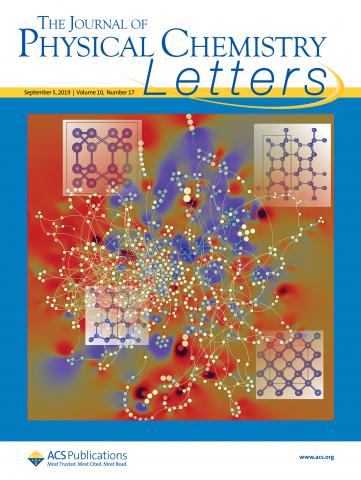A “GPS” to guide the discovery of new materials
January 10, 2020

Washington, DC— New materials can contribute potential solutions to many societal issues—from increasing access to clean drinking water to improving solar panel efficiency. But figuring out how to synthesize them can be a difficult process of trial and error.
Carnegie’s Li Zhu, Timothy Strobel, and Ronald Cohen have created a new tool for predicting pathways to novel materials that could speed this process up significantly. A paper demonstrating the method’s effectiveness is a cover story in The Journal of Physical Chemistry Letters.
Called PALLAS after one of the nicknames for Athena, the Greek goddess of wisdom, their method creates a kind of roadmap of how the structural arrangements of atoms that form materials are related.
“The specific arrangement of atoms within a material’s structure gives rise to its properties, including useful properties for energy storage, aerospace engineering, touchscreen technology, and so much else that shapes our lives,” Strobel explained. “The ability to accurately predict synthetic pathways to create new materials and control their properties would be a game changer.”
Soft graphite and super-hard diamond are two different crystalline structures of carbon that can transition between one another depending on the pressure and temperature conditions. For researchers like Zhu, Strobel, and Cohen, more exotic structures are accessed by applying more extreme pressures and temperatures. Having the ability to accurately predict how these structural transitions occur under varying conditions would improve the speed at which useful new materials could be synthesized.
When considering the synthesis of new structures, some of the possible spatial configurations of atoms are energetically favorable—meaning they are easy to maintain—and others are more difficult. Picture these energy states as hills that must be surmounted and valleys that can be coasted through effortlessly. What if there were a kind of a GPS that would improve the ability of scientists to navigate through these different states and predict the best routes for obtaining a particular material?
That’s exactly what PALLAS does! It’s able to use advanced computing to provide a comprehensive map of structural transition pathways and anticipate the existence of crystalline structures of compounds with varying levels of energetic stability.
“It’s like PALLAS is playing 100-dimensional chess, finding the lowest-energy pathway in this huge dimensional space that’s represented in of one of our maps,” Cohen explained.
In order to test the accuracy of their tool, Zhu, Strobel, and Cohen asked it questions for which they already knew the answers. It successfully predicted known transitions in the semiconductor cadmium selenide (CdSe), which is used for medical imaging and opto-electronics, and the element silicon (Si), which constitutes more than 90 percent of Earth’s crust.
“In demonstrating that it can map detailed structural transitions and the mechanisms that enable them, PALLAS can be used to guide the synthesis of materials for new technology, recreate deep Earth minerals, and possibly address biological questions such as protein folding,” Zhu said.
PALLAS predicted this complex transition pathway network for silicon. If you know how to read it, it is a roadmap that shows possible transition pathways between different structures. The tool developed by Zhu, Strobel, and Cohen correctly identified the lowest-energy transition pathway for silicon upon decompression from high pressure (thick black line). The structures in the four boxes show the different configurations of atoms along the transition path. The background colors indicate contours on the energy landscape. The points indicate stable and metastable structures of silicon with their size and color proportional to volume and energy, respectively. The composite of circles is similar to methods used in social networking analysis. Image by Li Zhu.

